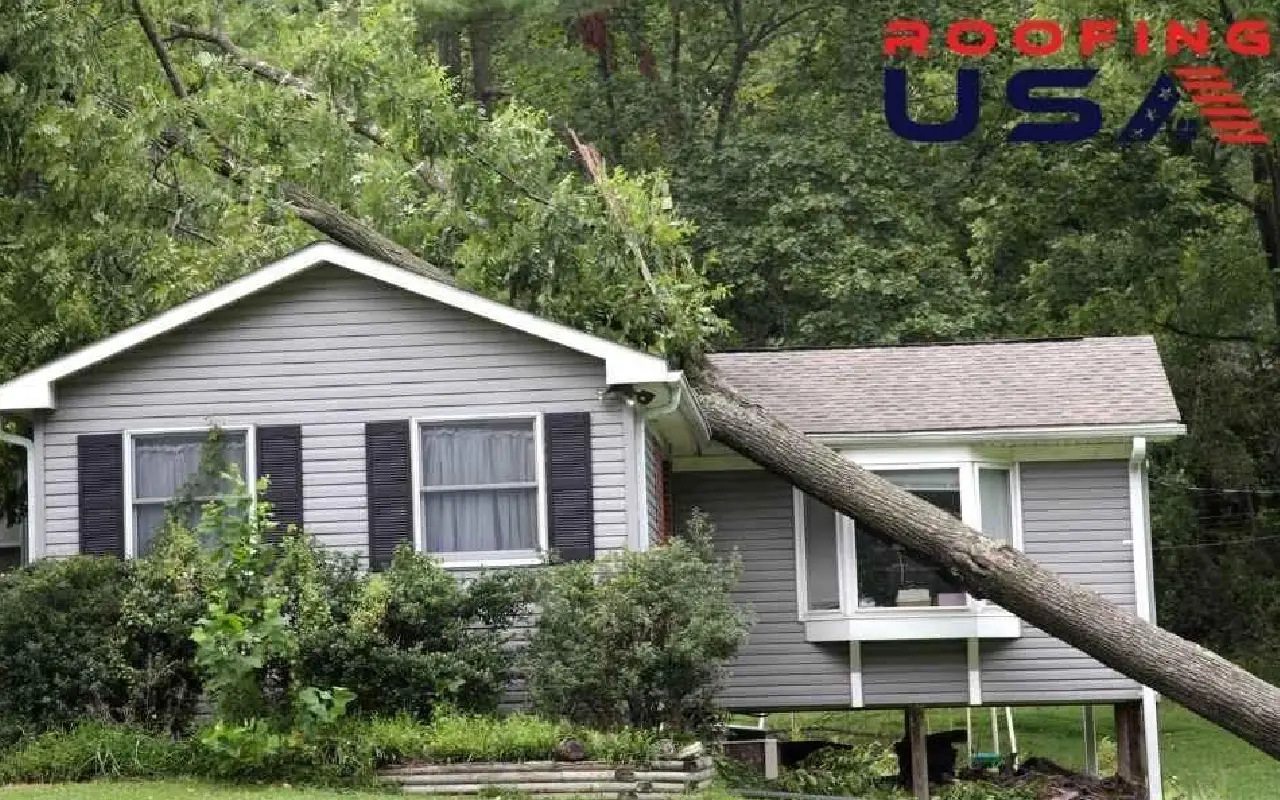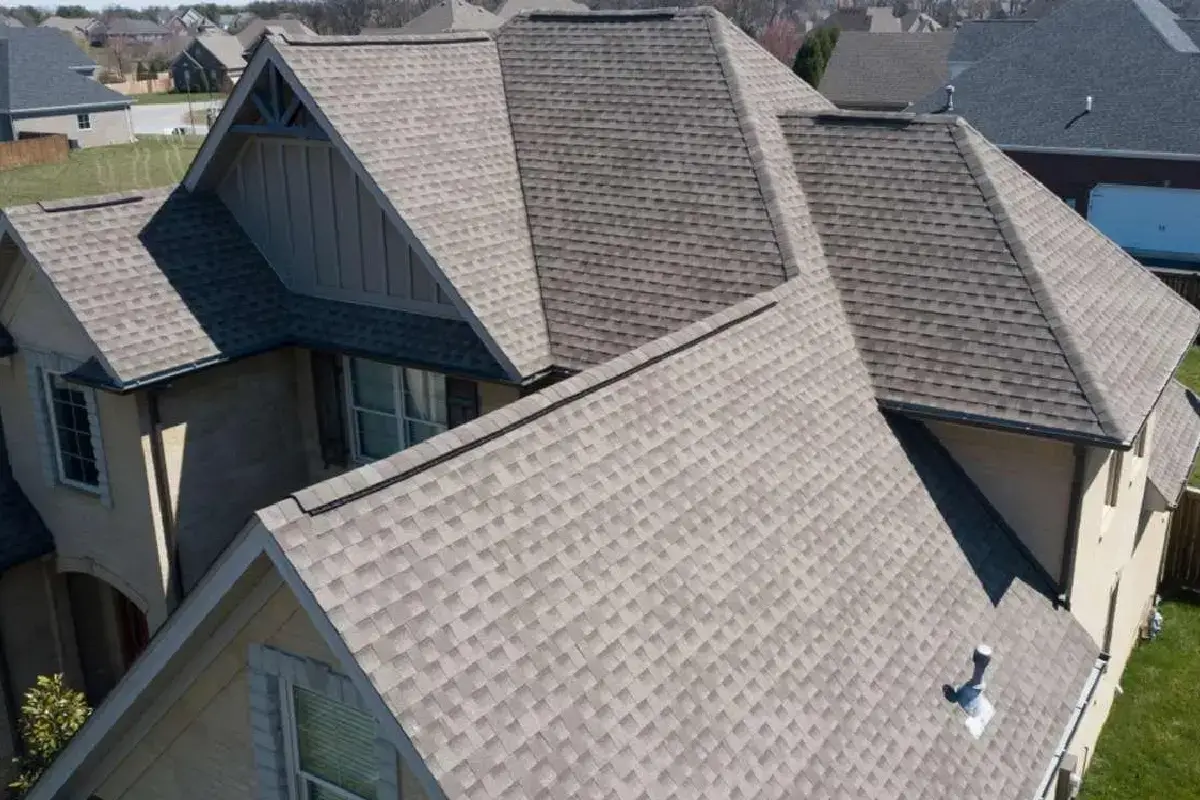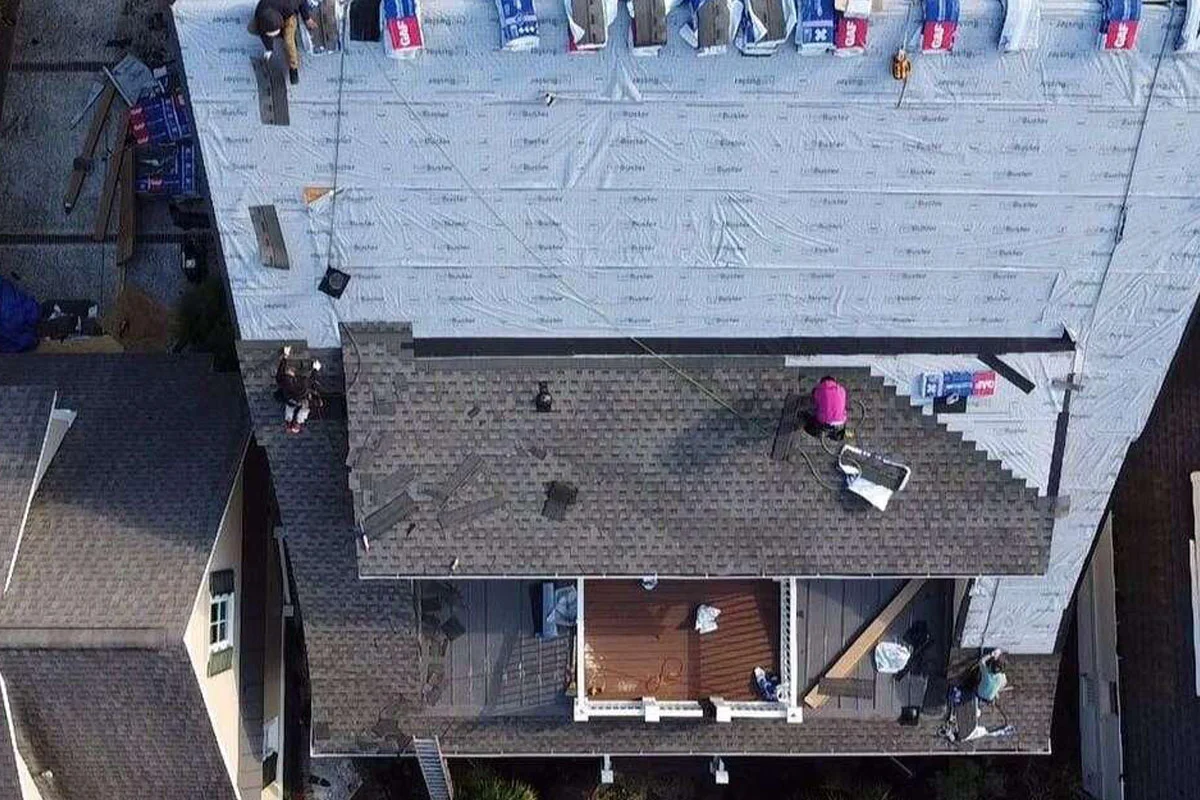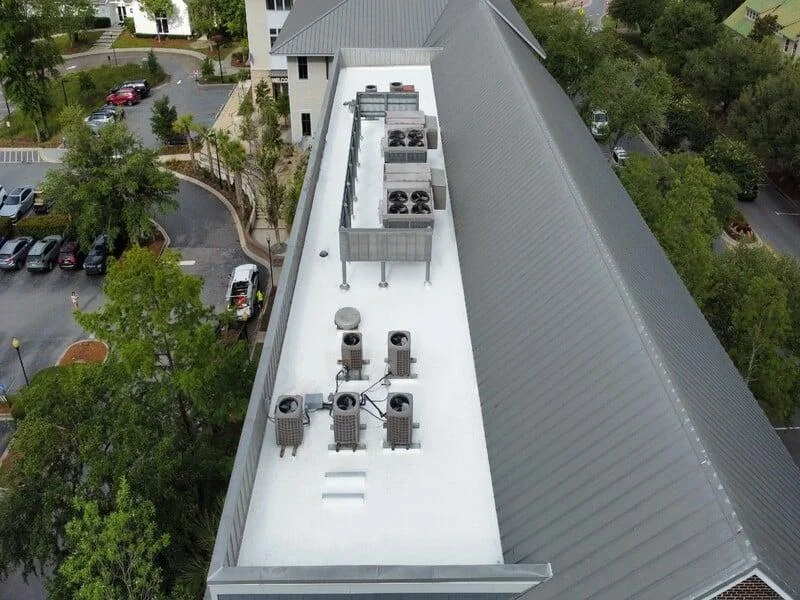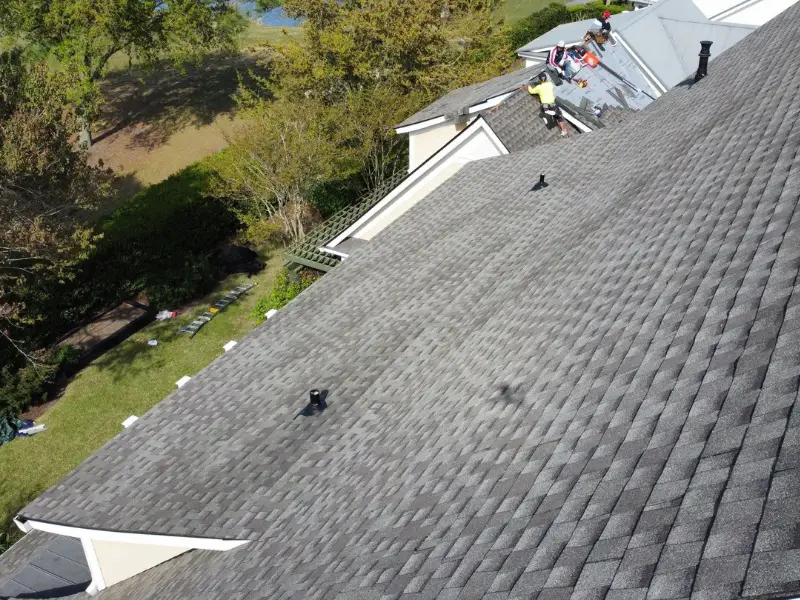Navigating your roof insurance claim can be an intimidating process. For many homeowners, it’s a journey into the unfamiliar.However, Roofing USA is here to help simplify the process for homeowners in the Charleston, SC, area, ensuring you get the coverage you deserve without unnecessary stress. Keep reading for a step-by-step guide to understanding your policy, filing a claim, and working with experienced roofing contractors throughout the process.
Understanding the Terminology of Your Roof Insurance Policy
For homeowners, diving into the particulars of a roofing insurance policy can feel like grappling with a foreign language. The jargon, terms, and conditions outlined can often be overwhelming. Yet, possessing a clear comprehension of these terms is vital. Misunderstandings can lead to unnecessary costs and disappointments down the line. Here are insights into some of the most frequently encountered terms:
Act of God
At first glance, this term may seem overly dramatic. However, in the insurance realm, it has a specific meaning.An “Act of God” pertains to unforeseen, uncontrollable natural events that no human can predict or prevent. These can include events like:
- Tornadoes: Tornadoes can cause severe damage to rooftops by tearing off shingles or even more significant structural damage.
- Hurricanes: Given Charleston’s coastal position, hurricanes can be a particular concern. They can bring torrential rain, fierce winds, and flooding — all potentially damaging to roofs.
When reviewing your policy, it’s crucial to determine whether damages resulting from these “Acts of God” are covered. If they’re not, you might want to reconsider or expand your coverage.
Storm Damage
While “Act of God” is a broad term, “Storm Damage” zeros in on the specifics. It’s about the nitty-gritty of natural events, including:
- Wind: Sometimes, it isn’t the heavy gales but the consistent wind pressure that weakens and eventually damages a roof.
- Hail: Hailstones can range in size, but even the smallest ones can dent or crack tiles, especially when driven by strong winds.
- Lightning Strikes: A direct strike can cause immediate fire damage, while indirect strikes can affect the structural integrity of the roof.
Always check your policy’s wording. Does it provide general coverage for storm damage or specify types of storm-related events? This clarity is crucial in understanding what you’re protected against.
Repair vs. Replacement
Not all damages require a complete roof overhaul. Some might just need minor fixes. Here’s where understanding the difference in your policy is pivotal:
- Repairs: Maybe it’s a few shingles that need replacing or a small section that needs patching up. Either way, repair coverage ensures that the costs for these fixes are covered up to the defined limit in your policy.
- Replacement: When the damage is so extensive that a repair won’t suffice, a replacement becomes necessary. This means the entire roof might need an overhaul. If your policy covers replacements, it should ideally cater to the costs of removing the old roof, purchasing new roofing materials, and installation.
By clearly differentiating between these two, Charleston homeowners can make informed decisions and set aside funds if their policy doesn’t entirely cover potential roofing needs.

Assessing Roof Damage After a Storm: Identifying Signs for a Roof Insurance Claim
Weather unpredictability is a given in Charleston, SC, and the aftermath of a storm often ushers in a period of anxiety for homeowners.A key concern after storms pass through revolves around roof integrity. How do you know if your roof has sustained damage? Which signs warrant an insurance claim?Let’s dive deeper into the specific indicators of roof damage and the necessary steps to ensure your home remains protected.
Missing Shingles
A storm doesn’t discriminate. It can pick, pry, and pull at your roof’s defenses. One of the most overt signs of damage is missing shingles. Even a single missing shingle can expose the underlayment, making it vulnerable to water ingress. With time, unprotected patches can lead to leaks, which can cause interior water damage, mold growth, and structural concerns. Regular inspections after a storm, even with a cursory look, can help spot such discrepancies early.
Buckling or Cracked Tiles
Not all roof damages are as overt as missing shingles. Some other types of damage are subtle but equally threatening. Buckling tiles are a warped or raised section of the roof tile. This distortion can be due to moisture trapped beneath the tiles or inadequate ventilation. It’s a clear invitation for external elements to permeate your home’s defenses. Additionally, cracked tiles are an issue. Whether it’s from falling debris during a storm or the sheer force of hail, cracks compromise the water-tight integrity of a roof. Over time, even minor cracks can widen, allowing water seepage. It’s essential to understand that even if these damages seem minor initially, they can escalate into more extensive (and expensive) problems down the line. Immediate attention can save both money and peace of mind.
Preparing for Your Insurance Adjuster’s Visit: Gather Necessary Documentation
Navigating the aftermath of storm damage in Charleston, SC, is no small feat. However, when it’s time for the insurance adjuster to visit your home, preparation can make a significant difference in simplifying the process. Here are a few tips to ensure you’re well-prepared for this crucial meeting.
- Locate Your Policy Number. The cornerstone of any insurance claim is your policy number. It’s your unique identifier and serves as a gateway to all the specifics of your coverage.
- Locate the Right Contact Information: Make sure you have the direct line or hotline for your insurance provider. This might differ from the general customer service number and is usually dedicated to claims.
- Have Your Documentation Ready: They say, “a picture is worth a thousand words.” In the world of insurance claims, it could also be worth thousands in repair and replacement costs!
Once you’ve ascertained your safety post-storm, start the documentation process. Delays can often lead to worsening damage, making it harder to attribute the cause directly to the storm. Capture the damage from various vantage points. This not only provides a comprehensive view of the damage but also gives the insurance adjuster a clearer understanding of the repair scope. Again, moving quickly to call your insurance and collect documentation about damage helps you file a claim within any time limitations that apply to your policy.
Stepping into the Negotiation Process with Your Insurance Company
By equipping yourself with the right tools and resources, homeowners can navigate the negotiation process with confidence and clarity.Familiarize yourself with the nuances of your insurance policy. Are there specific exclusions? What’s the maximum coverage for roof replacements versus repairs? Being aware of these details helps set realistic expectations and provides a firm ground for discussions. It’s also crucial to understand depreciation. Some policies factor in the depreciation of your roof, which can affect the claim amount. Make sure you know how this works and how it might influence the negotiations. Then, leverage your documentation. Tangible evidence is pivotal. It showcases the extent of the damage and reinforces the validity of your claim. If you’re not sure about negotiating on your own (or your current negotiations aren’t going well), it’s okay to rely on professionals. Working with an experienced roofing company like Roofing USA means you have seasoned guides to lead the way toward getting your roofing repair or replacement paid for!
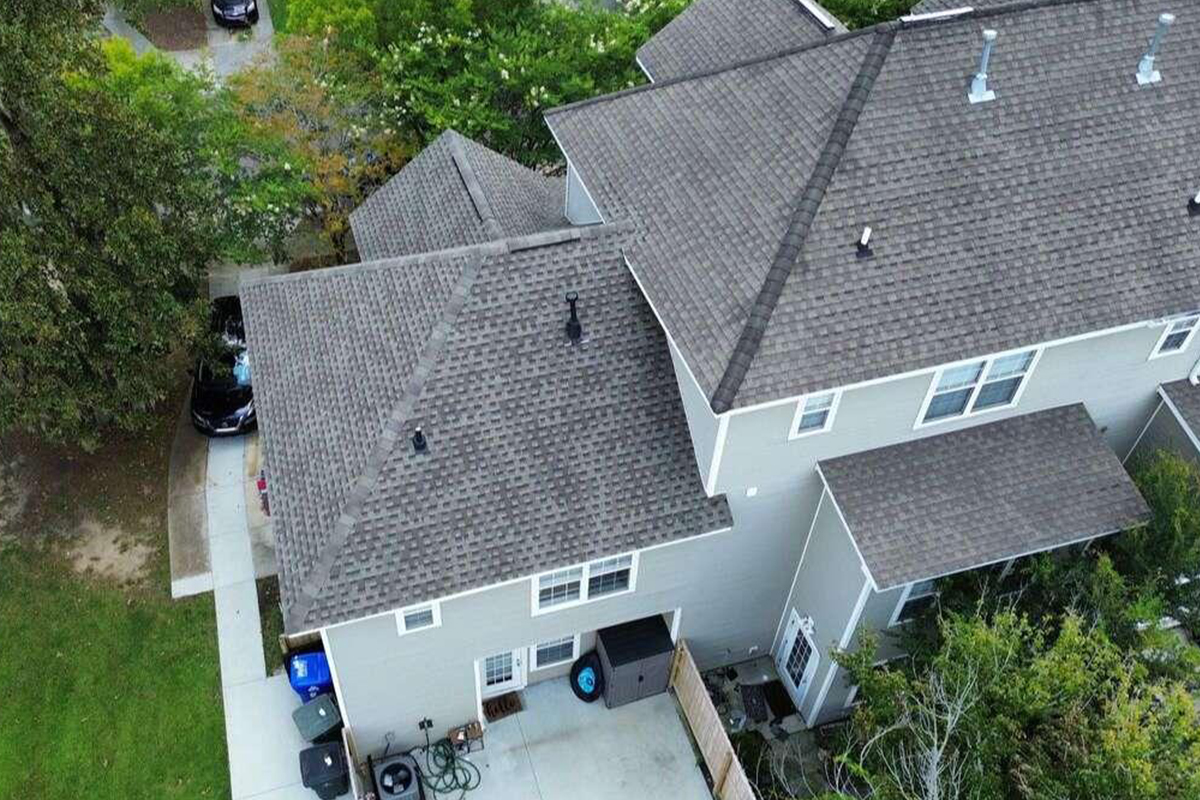
Simplify Your Roof Insurance Claim With Roofing USA
While the process of a roof insurance claim can seem complex, with the right guidance and preparation, it doesn’t have to be. Charleston homeowners deserve fair treatment and full coverage for roof repair and replacements. With these tips and the right roofing contractors to walk with you through the process, you’re one step closer to achieving that!Roofing USA is here to help local homeowners simplify the process, understand the nuances, and be proactive when filing a claim to protect their homes. Reach out to our team to learn how we can help! Start by scheduling your Free Roof Inspection.




